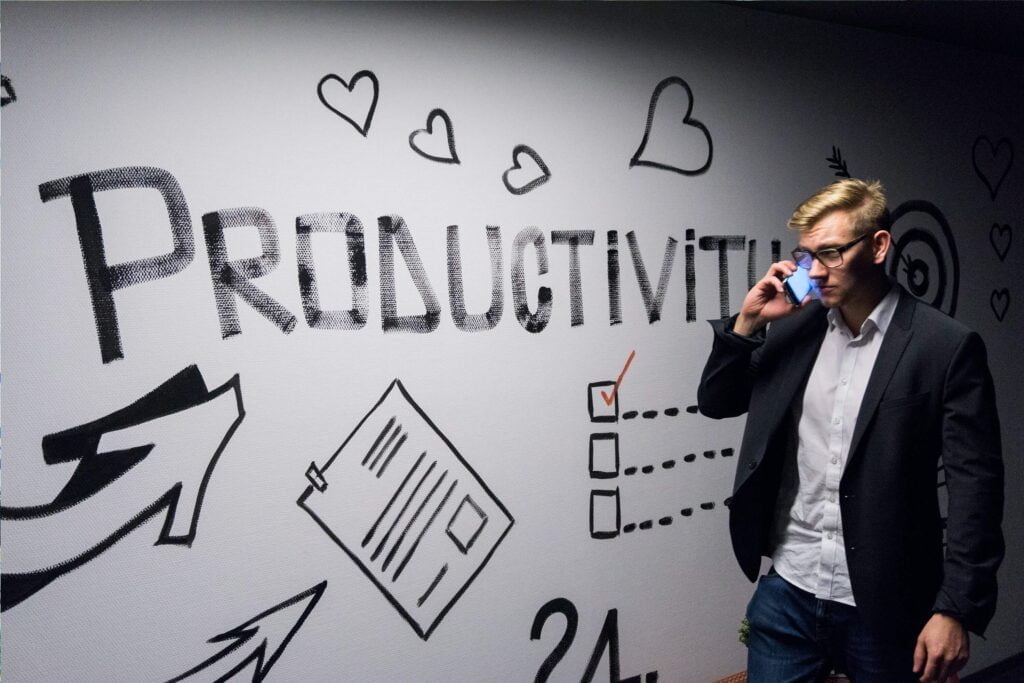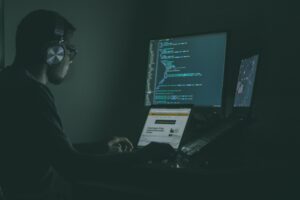In today’s evolving work landscape, remote work has become increasingly prevalent. As companies adapt to this new paradigm, they face unique challenges in monitoring employee productivity and ensuring effective time management. Enter monitoring software for remote employees—a solution that offers insights into work patterns, helps optimize productivity, and aids in performance evaluation. However, the use of such software also raises concerns about privacy invasion and its impact on employee morale. In this article, we will explore the pros and cons of monitoring software for remote employees, while also introducing IdleBuster—a tool designed to address some of these challenges and enhance productivity without compromising privacy.

Improved Productivity
One of the key advantages of monitoring software for remote employees is its ability to improve productivity. By keeping track of employees’ computer activities, companies can identify potential distractions and time sinks, allowing them to take proactive measures to minimize unproductive behavior. For example, monitoring software can reveal excessive time spent on non-work-related websites or applications, enabling employers to intervene and redirect employees’ focus. By addressing these distractions, employees can stay on task, resulting in higher levels of productivity and improved overall performance.
Another way monitoring software enhances productivity is through its time management capabilities. By tracking the time spent on different tasks and projects, employers gain insights into how employees allocate their time. This data can be used to identify bottlenecks, optimize workflows, and allocate resources more effectively. For remote employees, who often work independently, this visibility into time management can be particularly valuable. It allows employees to better prioritize their tasks, set realistic deadlines, and make informed decisions about how to allocate their time and energy.
Identifying Inefficiencies
In addition to improving productivity, monitoring software can also help identify inefficiencies in work processes. By analyzing the data collected from employee activities, employers can pinpoint areas where time is being wasted or where workflows can be streamlined. For instance, monitoring software may reveal that a certain task is taking significantly longer than expected, indicating a potential inefficiency in the process. Armed with this knowledge, employers can implement changes, such as providing additional training or resources, to address the inefficiencies and optimize productivity.
Moreover, monitoring software can shed light on broader organizational inefficiencies. By analyzing data across teams or departments, employers can identify patterns and trends that may indicate systemic issues. For example, if multiple employees across different teams consistently encounter roadblocks or spend excessive time on non-essential tasks, it could be a sign of a larger process or resource-related problem. By addressing these inefficiencies, companies can streamline operations, reduce unnecessary workloads, and improve overall efficiency.
Performance Evaluation
Performance evaluation is a crucial aspect of managing a remote workforce, and monitoring software can play a valuable role in this process. By tracking and analyzing employees’ computer activities, employers can gather objective data to evaluate individual performance. This data-driven approach ensures fairness and reduces bias in performance assessments. It allows employers to focus on concrete evidence rather than subjective perceptions or assumptions.
Furthermore, monitoring software enables employers to provide targeted feedback and coaching based on the data collected. For example, if an employee consistently struggles with meeting deadlines, the data can be used to have constructive conversations and identify potential solutions. By leveraging monitoring software as a tool for performance evaluation, employers can foster a culture of continuous improvement and provide employees with the necessary support to excel in their roles.
Compliance and Security
Compliance with company policies and ensuring data security are paramount concerns for organizations. Monitoring software can help address these challenges by providing insights into employees’ adherence to policies and detecting potential security breaches. By monitoring employees’ computer activities, companies can identify any violations or deviations from established protocols. This allows them to take appropriate action, such as providing additional training or reinforcing policies, to ensure compliance.
Moreover, monitoring software can
facilitate the detection of security threats and protect sensitive data. For example, if an employee engages in suspicious or unauthorized activities, such as attempting to access restricted files or sharing confidential information externally, the monitoring software can generate alerts or notifications for immediate intervention. This proactive approach helps safeguard the company’s data and mitigate the risk of potential breaches.
Additionally, monitoring software provides a means of generating comprehensive reports on employee activities, which can be invaluable during audits or compliance assessments. These reports provide an accurate record of employees’ computer usage, including time spent on different applications, websites visited, and files accessed. Such documentation helps demonstrate adherence to regulatory requirements and enables organizations to address any potential compliance gaps promptly.
While monitoring software offers significant benefits in terms of compliance and security, it is crucial to strike the right balance between monitoring and privacy to maintain employee trust and engagement. The intrusive nature of monitoring software raises concerns about privacy invasion and the potential erosion of employee autonomy.
Invasion of Privacy
One of the primary concerns associated with monitoring software is the invasion of employee privacy. Remote work already blurs the lines between personal and professional spaces, and monitoring software further exacerbates this boundary. Employees may feel uncomfortable knowing that their every digital move is being tracked and analyzed. This invasion of privacy can lead to increased stress and a sense of being constantly watched, ultimately affecting employee morale and job satisfaction.
To address these concerns, IdleBuster—an innovative tool designed specifically for remote employees—offers a unique approach. Rather than focusing on monitoring specific actions or capturing screenshots, IdleBuster simulates activity to trick time trackers into believing that employees are actively engaged in work. By randomly generating mouse movements, simulating keyboard activity, and dynamically switching between open tabs and applications, IdleBuster creates the appearance of continuous engagement, even during periods of inactivity. This approach allows employees to retain a sense of privacy while maintaining the illusion of productivity.
Trust and Morale
Constant monitoring has the potential to erode trust between employers and employees. When employees feel constantly watched, their sense of autonomy and trust in their employers can be compromised. This can lead to decreased job satisfaction, diminished morale, and a negative impact on overall employee well-being. However, with IdleBuster, employees can experience a greater sense of trust and autonomy. By using IdleBuster to simulate activity during periods of inactivity, employers can provide employees with the flexibility to manage their time effectively without feeling constantly scrutinized. This helps foster a healthier work environment and promotes a stronger sense of trust between employers and remote employees.
Additionally, IdleBuster’s activity simulation feature can contribute to improved work-life balance for remote employees. Instead of feeling the pressure to constantly appear busy or engaged, employees can take short breaks or attend to personal matters without triggering suspicions from monitoring software. This flexibility allows employees to recharge and maintain their well-being, ultimately leading to higher job satisfaction and increased productivity when they are actively working.
Accuracy and Reliability
Monitoring software often relies on tracking keystrokes, mouse movements, and application usage to generate reports on employee productivity. However, these methods may result in false positives or negatives, inaccurately representing an employee’s actual work engagement. IdleBuster addresses this issue by simulating human-like mouse movements and keyboard activity. By mimicking natural behavior, IdleBuster ensures that the reports generated by monitoring software accurately reflect an employee’s level of engagement, even during periods of inactivity.
This accuracy and reliability are crucial for performance evaluations, project management, and resource allocation. Employers can confidently assess an employee’s productivity based on the comprehensive and authentic reports generated by IdleBuster. By providing accurate data, IdleBuster enables fair evaluations, informed decision-making, and efficient allocation of resources.
Preventing Misuse
One concern often associated with monitoring software is the potential for micromanagement
or excessive surveillance. When monitoring software is used inappropriately, it can create a culture of mistrust and hinder employee autonomy. However, IdleBuster offers a solution that mitigates these concerns. By focusing on activity simulation rather than monitoring specific actions, IdleBuster avoids the pitfalls of micromanagement.
IdleBuster’s approach ensures that employees have the freedom to work in their preferred manner, while still maintaining the appearance of productivity. The tool’s random generation of mouse movements, keyboard activity, and tab switching creates a natural and varied digital footprint that aligns with typical human behavior. This eliminates the need for constant monitoring and allows employees to work independently, fostering a sense of trust and autonomy.
Furthermore, IdleBuster’s emphasis on activity simulation supports a healthier work environment by discouraging excessive surveillance. Employers can focus on the overall productivity and outcomes achieved by their remote employees, rather than fixating on minute details of their computer activities. This approach promotes a more positive and empowering work culture that values trust, autonomy, and results.
In conclusion, monitoring software for remote employees presents both advantages and disadvantages. While it offers benefits such as improved productivity, time management, and compliance, it also raises concerns regarding privacy invasion, decreased trust, and potential misuse. IdleBuster, a unique tool designed specifically for remote employees, addresses these concerns by simulating activity to maintain privacy, promote trust, ensure accuracy, and prevent micromanagement. By striking a balance between monitoring and employee autonomy, IdleBuster enhances productivity and job satisfaction, creating a healthier and more effective remote work environment.
IdleBuster’s focus on activity simulation not only prevents micromanagement but also discourages the misuse of monitoring software for excessive surveillance. Excessive surveillance can create a toxic work environment, erode trust, and have a detrimental impact on employee morale. However, IdleBuster’s approach empowers employees by giving them the freedom to work without the constant feeling of being monitored.
By using IdleBuster, employers can promote a culture of trust, transparency, and mutual respect. Instead of relying on constant monitoring, employers can shift their focus to fostering open communication, setting clear expectations, and providing support to their remote employees. IdleBuster serves as a tool that supports the idea of monitoring for productivity optimization rather than invasive surveillance.
Moreover, IdleBuster’s activity simulation feature ensures that employees’ privacy is respected. Instead of capturing screenshots or monitoring specific actions, IdleBuster maintains employees’ confidentiality by focusing on creating the appearance of active engagement. This approach not only addresses privacy concerns but also allows employees to work with peace of mind, knowing that their personal information and activities are not being excessively scrutinized.
In summary, IdleBuster’s role in preventing the misuse of monitoring software is twofold. Firstly, it promotes a culture of trust and autonomy by focusing on activity simulation rather than invasive monitoring. Secondly, it safeguards employee privacy by avoiding the collection of unnecessary and intrusive data. By striking this balance, IdleBuster helps create a healthy work environment where employees feel valued, empowered, and motivated.
How can monitoring software benefit remote employees?
What are the privacy concerns associated with monitoring software?
Is constant monitoring stressful for remote employees?
How can IdleBuster help improve productivity for remote workers?
Does IdleBuster compromise employee privacy?
Can IdleBuster accurately simulate human-like activity?
Does IdleBuster address the issue of false negatives in monitoring software?
How does IdleBuster promote trust and morale among remote employees?
Can IdleBuster be used for micromanagement or excessive surveillance?
Does IdleBuster work on both Windows and macOS?
Conclusion
Monitoring software for remote employees can offer valuable insights into productivity, time management, compliance, and security. However, it is essential to consider the pros and cons, as well as address the concerns associated with privacy invasion and misuse. IdleBuster emerges as a solution that not only enhances productivity but also respects employee privacy, builds trust, and promotes a healthier work environment.
With its unique approach of simulating activity, IdleBuster ensures that remote employees can maintain their privacy while appearing engaged and productive. By addressing the drawbacks of constant monitoring, IdleBuster supports employee autonomy, reduces stress, and fosters a sense of trust between employers and remote workers. Additionally, IdleBuster’s accurate and reliable activity simulation helps generate comprehensive reports, facilitating fair performance evaluations and effective resource allocation.
As companies navigate the challenges of monitoring remote employees, IdleBuster offers a solution that strikes the balance between productivity optimization and employee well-being. By utilizing IdleBuster, employers can create a work environment that values trust, privacy, and collaboration, ultimately leading to enhanced productivity, job satisfaction, and overall success in the realm of remote work.




